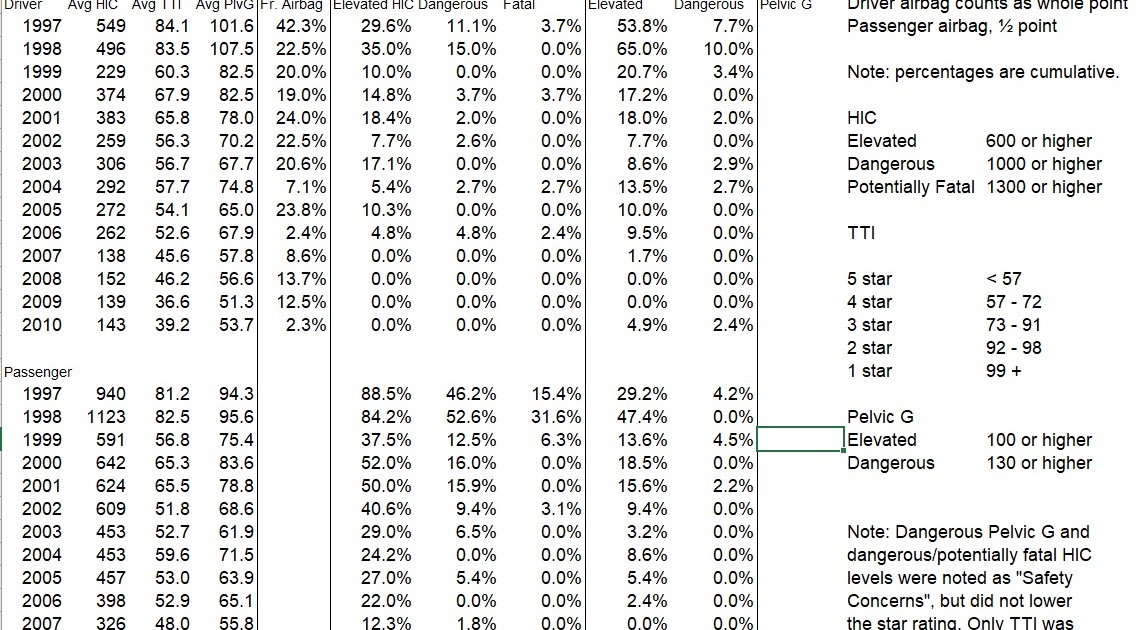Vehicle Improvement Over Time in the 1997-2010 NHTSA Side Impact Test

Average HICs, thoracic trauma indexes, and pelvic G’s for each model year from 1997-2010, along with the percentage of vehicles where a front airbag deployed (if the driver airbag or both frontal airbags deployed, it was a whole point; if just the passenger airbag deployed, it was a half-point, but this was very rare), as well as the percentage of vehicles with high HICs and pelvic G’s.
NHTSA’s side impact test was the first side impact crash test where vehicles were rated and the results disseminated to consumers. Introduced for the 1997 model year (with the first test performed on November 20, 1996), which pre-dated the IIHS side impact by 6 years, the test gave vehicles a star rating out of five based on risk of chest injury, as measured by the Thoracic Trauma Index. Over the 14 years the test was done, the average performance would improve dramatically; although head and pelvic injuries weren’t part of the rating, they would also show massive improvement. Thanks to this test, the IIHS side test, beefed-up federal side impact safety standards, and side airbags, the period from about 1995 to 2010 would prove to be a revolution in side impact safety.
In the first two years, the average vehicle earned a 3-star rating out of 5 for both front and rear occupants, but the most major safety concern was head injuries for rear occupants. In 1998, almost all rear-seated occupants would suffer at least minor head injury. Over half of rear-seated occupants would have suffered serious (or worse) head injury, and almost a third risked death; in contrast, for those in the front, only 15% would suffer serious head injuries, none of which crossed into the potentially fatal category. The reason is that most heads “shot the gap” in the front, passing through the plane of the broken side window and missing any hard head contact, while rear occupants’ heads often slammed into the C-pillar.
Improvement was rapid. By 2000, the average vehicle earned a 4-star rating for both occupants, and the majority of new vehicles spared all occupants from both serious head injury and pelvic trauma. Side curtain airbags were still a rarity at this point (these airbags would later spur further improvement in this test, as well as being a near-necessity to pass the more stringent IIHS side test).
With side airbags and improved side structures spreading through the 2000s, performance continued to improve, albeit at a slower pace for rear occupants than for front occupants. Nevertheless, by 2005, the average vehicle had improved to the 5-star range for both occupants, and serious head injuries were rare even in the back seat. By 2007, HICs in the “elevated” range (600 or more) were extinct for front occupants and a rarity for rear seat occupants.
Another noticeable trend is the decreasing commonness of front airbag deployment in the side impact. Due to more accurate sensors and “dual-threshold” airbags (which require a higher severity impact, one where seat belts are insufficient on their own, to set off the front airbags if the occupants are wearing seat belts), the percentage of vehicles that deployed front airbags dropped from 42% in 1997 to the 19-25% range for most years between 1998 and 2005, before dropping below 10% for most years thereafter.







